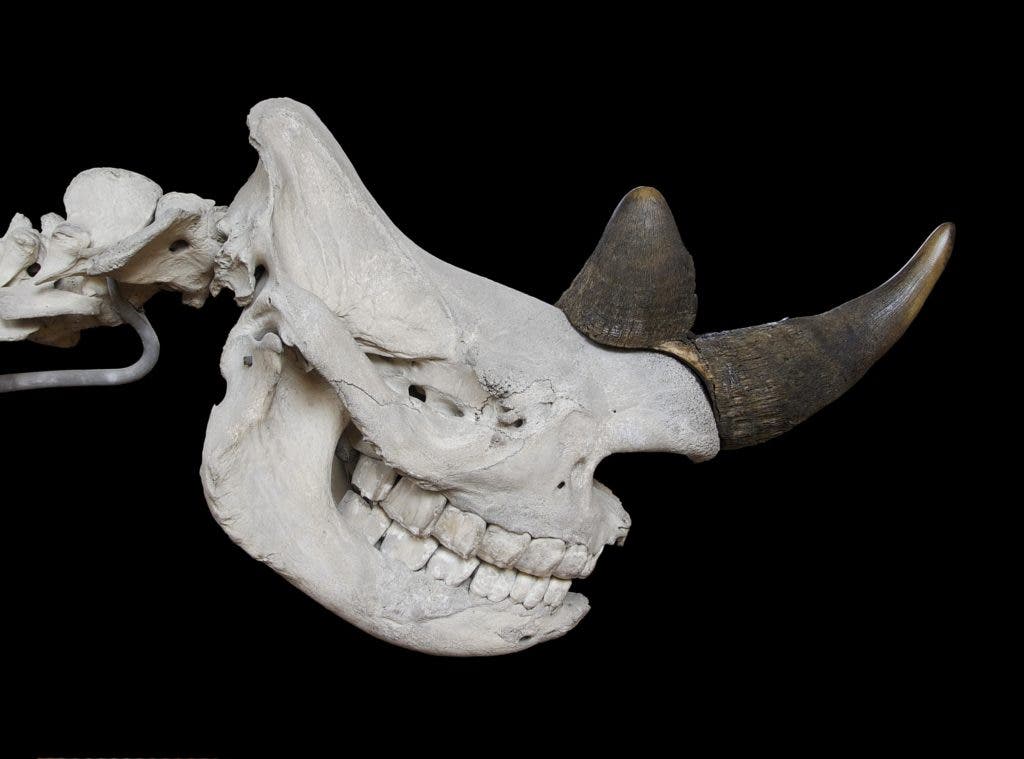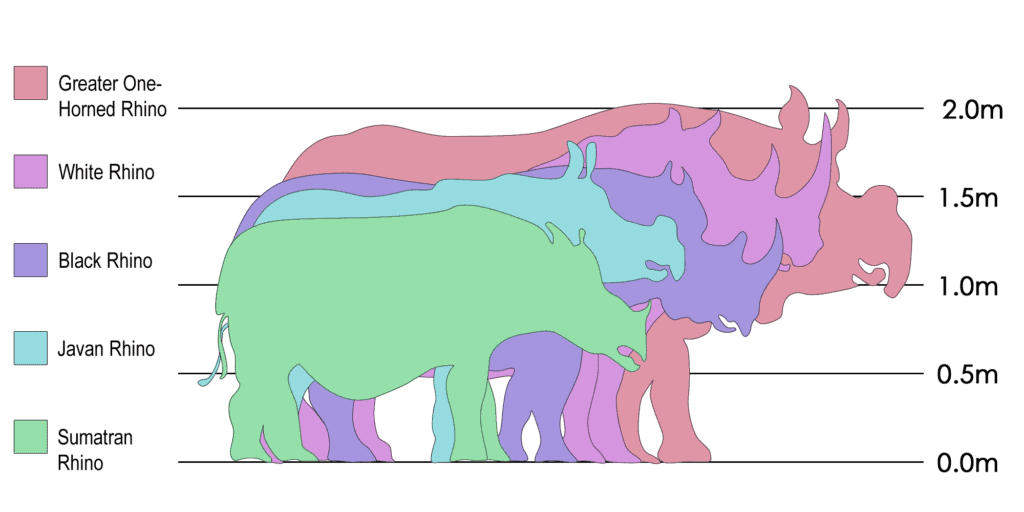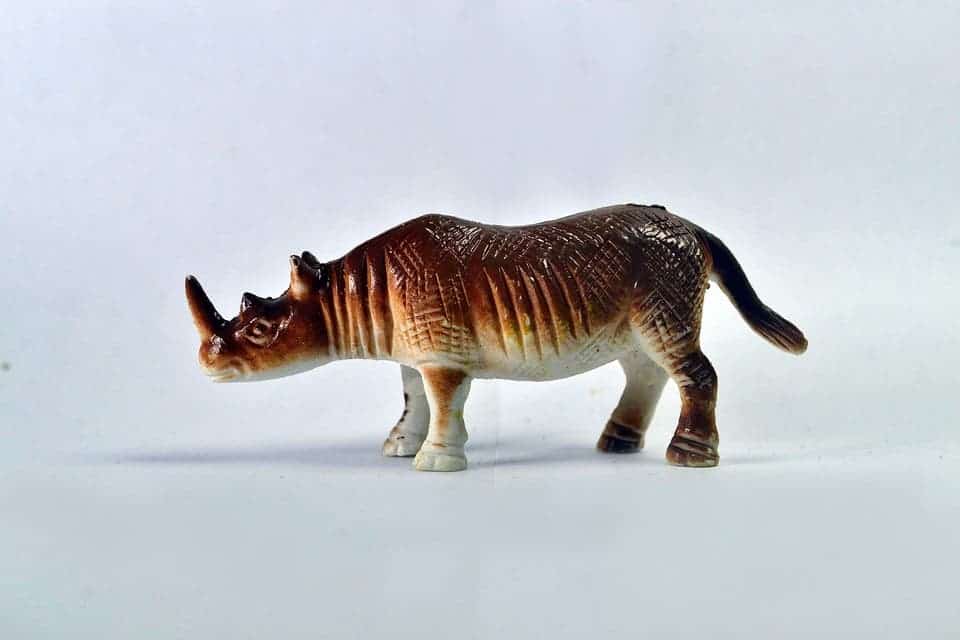A Seattle-based startup plans to save the rhinos — by outselling the poachers. Key to this strategy will be bio-fabricating fake horns out of keratin, the substance hair and fingernails are made of, to tank the price of horns on the black market and drive poachers out of business.

There’s one pretty nifty concept in economics that has stubbornly defied policy ever since someone first thought of banning anything — supply and demand. It’s why the Prohibition worked about as well as a raft made of concrete and why the harder we push forth the “war on drugs” the less headway we make.
By eliminating any legal avenue of satisfying a certain demand, bans effectively grant a monopoly over that good or service to the black market. In the process, officials lose any control over said commodity. Prices soar because that’s how monopolies work. The extra value justifies the risk of selling a ‘banned’ good, supply grows to meet demand, and voila! It’s illegal, but it’s lucrative, so trade flourishes. To put it bluntly, when people want something, the fact that it’s “illegal” won’t stop them. They’ll just go buy it (at a premium) from a shady dude in a shady alley instead of a supermarket.
That same economic ebb-and-flow is killing off the rhino today. The animals’ horns are banned for trade under international law and have become ridiculously valuable on the black market, fetching up to US$60,000 a pound ($133,200 per kilogram). That’s about three to four times more than gold, depending on who you’re asking. Demand is powered chiefly by East Asian markets, with Vietnam and China making up the bulk of trade. Horns are used to make high-valued carvings, from cups to jewelry, and traditional Chinese medicine holds that they will make you, among other things, quite horny. A pun I’d delight over if not for the tragedy of the situation.
The end of the matter is that rhinos today are on the brink of extinction. Decades of Western trophy hunting, poaching, and habitat destruction have decimated overall rhino populations. Between 1970 and 1992, for example, black rhinos (Diceros bicornis) saw a 96% reduction in numbers. Other species are also hard pressed, such as the Javan rhino (Rhinoceros sondaicus), currently estimated to number only 60 individuals according to the World Wildlife Foundation, or the white rhinos (Ceratotherium simum) that are still making a comeback from numbering only 6 individuals in 2014.

Image via Wikimedia.
Three out of the five rhino species are listed as Critically Endangered on the IUCN’s Red List, and not a single one listed above “Vulnerable”. Habitat loss and poaching are currently the biggest threats to the rhinos. According to nonprofit Save the Rhino, 1,054 rhinos were killed in 2016 in South Africa alone, up from just 13 animals in 2007.
Pss, kids, wanna buy some horns?
Enter Seattle-based biotech startup Pembient. They’re trying to solve half the rhinos’ problems by literally making rhino horns so dirt-cheap no poacher worth his salt will bother with them. Their idea is to bio-fabricate fake horns out of keratin, a protein organisms use when strength and flexibility are required. It makes up stuff like fingernails and hooves, hair or fur, horns, and claws. By 3D printing keratin, Pembient hopes to manufacture fake horns that are identical on a “macroscopic, microscopic, and molecular” level to the real ones, according to its CEO and co-founder Matthew Markus.
The scheme isn’t ready to go right now. Once the fabricated horns are up to scratch and market-ready, however, they’ll feel so real that it will be “impossible” to distinguish them from natural horns, Markus told Business Insider. They’ll then be injected into the Asian carvers’ supply chain through various sources masquerading as honest poachers trying to get by. In the end, nobody will know whether they’re buying real or fake.

Image credits Fathromi Ramdlon.
In effect, Pembient plans to flood illegal markets with super-cheap, rhino-friendly, counterfeit horns. Because they’re manufactured in bulk in a plant, the fakes will be much cheaper and could be sold for significantly less than the real horns. Over time, since people won’t be able to tell the two apart, this unfair competition will bring prices down, sending poachers looking for new employment.
“If you cordon rhino horn off, you create this prohibition mindset,” Markus said. “And that engenders crime, corruption, and everything else that comes with a black market.”
It’s an interesting strategy, and radically different from traditional approaches used by conservationists. Bringing down demand for horns isn’t feasible, Markus thinks, adding that “it’s not really ethical either.” Instead, Pembient plans to increase supply so much that it would be impossible to turn a profit from poaching rhinos.
“These practices are based on thousands of years of cultural tradition — they’re a lot older than Thanksgiving,” he added, reffering to the traditional practices that maintain the rhino horn trade.
“We can’t just tell them to stop.”
There are some concerns leveled at the startup, however. In particular, International Rhino Foundation and Save The Rhino International, two NGOs working on rhino conservation, have raised concerns regarding the plans’ efficacy, pointing out that the black market is already swamped in fake horns and prices are still incredibly high.
“More than 90% of ‘rhino horns’ in circulation are fake (mostly carved from buffalo horn or wood), but poaching rates continue to rise annually,” the organizations wrote in a joint statement.
The two also argued that synthetic horns will divert attention from the “real problem,” which is to end rhino poaching.
Still, rhinos are running out of time as well as numbers, and as we’ve seen earlier, poaching has picked up in recent years. Markus agrees that Pembient’s approach is fundamentally different than current conservation efforts, but thinks his approach could help finally end poaching for good.
Personally, I’d like to think that while people may want the horns, nobody explicitly wants to kill rhinos. Tradition is a central pillar of many people’s lives, but I’d advocate for compromise. After all, traditionally, most people would work in the field and eek out a pretty bleak livelihood before an untimely end at the hands of dysentery some other, equally-jolly way to die horribly. A state of affairs which, I’m sure we can all agree, is best left in the past. So I’d really like to see Pembient succeed at their goal — for “restore-faith-in-humanity” points, if nothing else.
A “prevention and treatment” approach has shown efficacy in addressing drug abuse, so it might work for rhino horn trade as well. Time will tell. In August, the company introduced a novel cryptocurrency program, the “Pembicoin” to fund their research and development. Each coin will be redeemable for one gram of bio-fabricated rhino horn once they become available, in 2022, according to the company’s website.
If Pembient’s approach proves efficient, it could pave the way for synthetic ivory to combat elephant poaching in the future.





